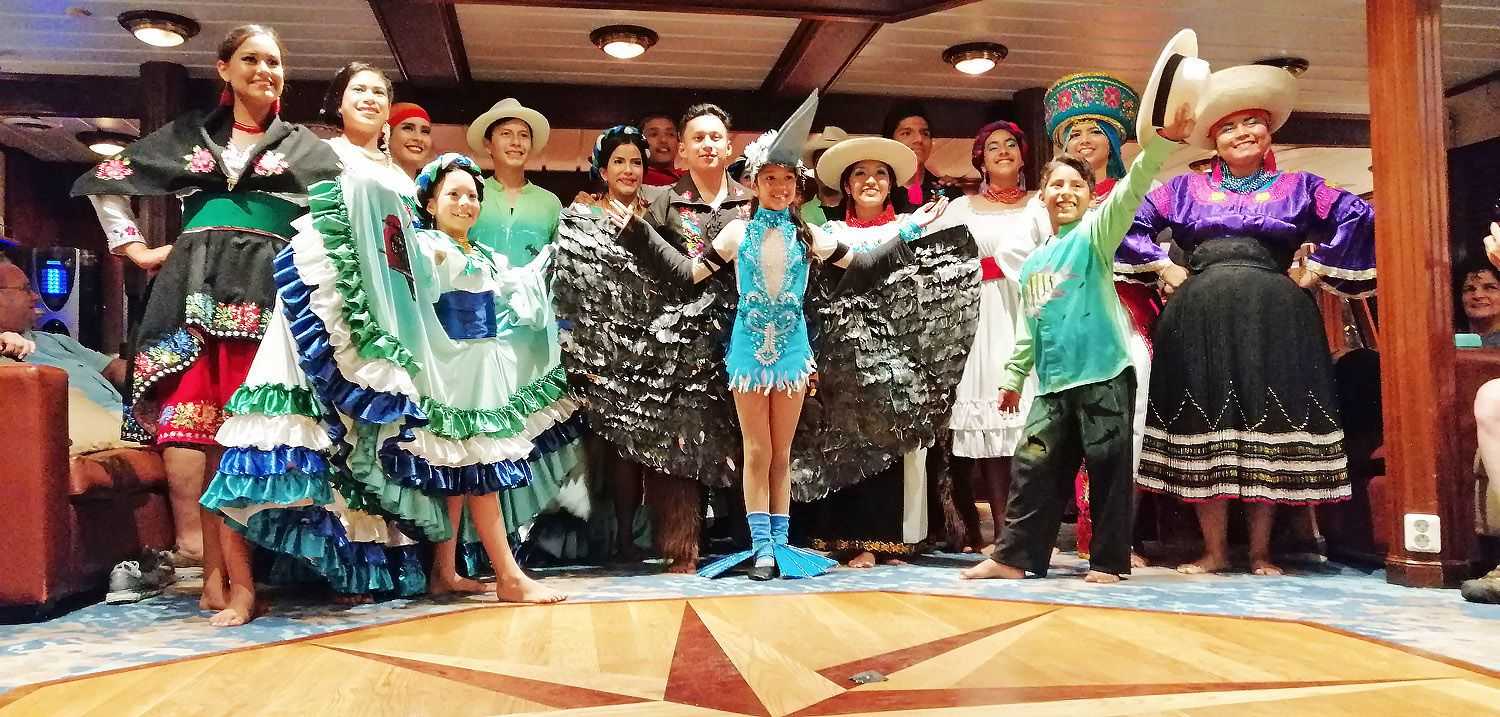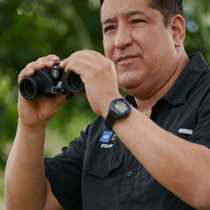San Cristobal Island, also known as Chatham Island, is located on the easternmost side of the Galapagos and is the fifth largest in the archipelago. Established in 1892, its official Spanish name was given in honor of Saint Christopher, patron saint of mariners and seafarers. Its English name, Chatham, comes from John Pitt, second Earl of Chatham. San Cristobal has an abundant source of fresh water and rich soil, excellent for agriculture. Due to this, it is one of the oldest permanent human settlements of all the islands in the Galapagos, and interestingly, one of the fist islands visited by Charles Darwin in 1835. Today the Galapagos is a province of the Republic of Ecuador, with Puerto Baquerizo Moreno as its political capital.
This morning after breakfast, our Zodiac fleet took us to the main dock in town to board buses heading toward the highlands. On our bus ride we observed the agricultural areas of the island and made a brief but meaningful stop at the “El Progreso” ruins. In 1858, Manuel Cobos, José Monroy, and José Valdizán formed the Orchillera Company. When this project failed, the despotic Cobos moved to El Progreso, a settlement on San Cristóbal, focusing his efforts on sugar cane, coffee, and tortoise oil. He founded a large hacienda with its own laws and currency. From 1879, until his assassination in 1904, the Cobos Empire used prisoners and indentured servants. The ruins of the Cobos hacienda house can still be found in El Progreso. Later, we visited La Galapaguera: a tortoise breeding center established by the Galapagos National Park in 2003. While walking along the trails we observed many giant tortoises roaming free and living in semi-captive conditions in their natural habitat. We also saw juvenile tortoises in their nurseries.
In the afternoon, we traveled to Cerro Tijeretas (Frigate Hill) for a wonderful view of the bay where H.M.S. Beagle anchored in 1835. Along the volcanic paved path that led to the top of the hill, we observed several San Cristobal lava lizards and mockingbirds, which are endemic to the island. We also found many prolific ground finches and yellow warblers on tree branches.
After dinner we enjoyed a fabulous dance performance by talented and skillful young dancers from town. They showed us the diverse and beautiful traditional dresses and rhythms from all over Ecuador. With joy and amazement, we observed a folkloric parade of intense colors and culture. What an unforgettable day!







